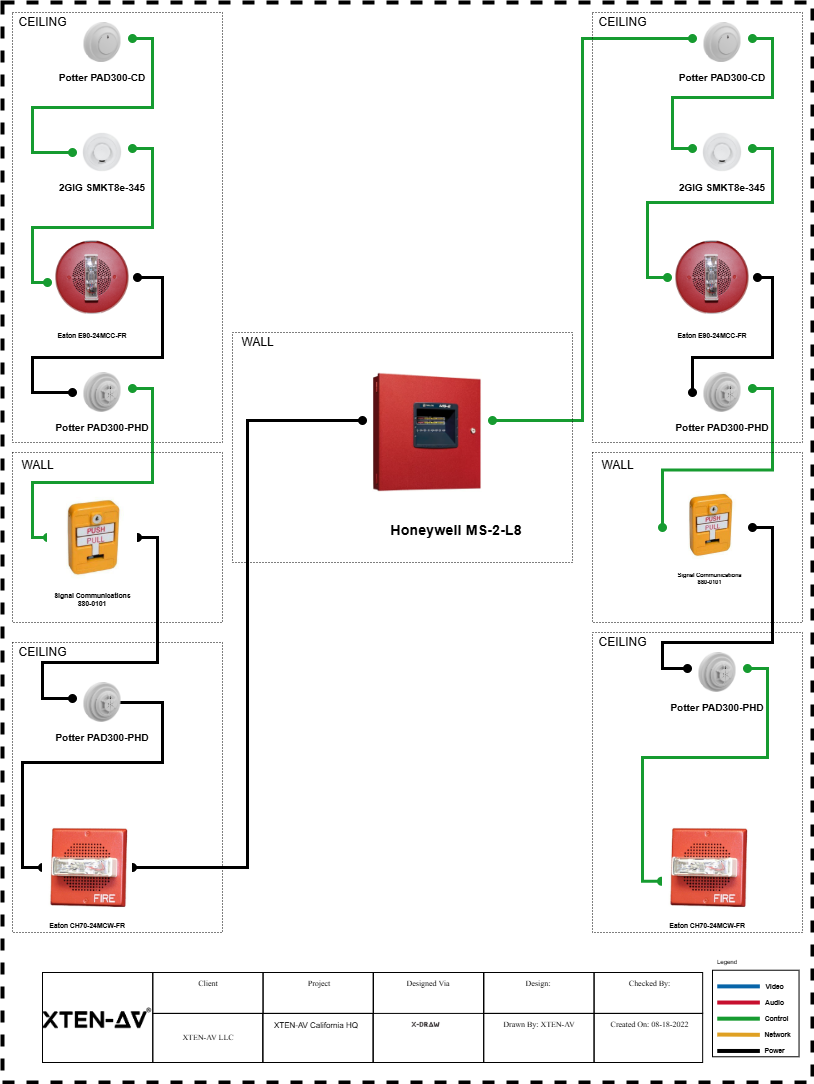How do I choose the right fire alarm design software for my project?

Fire safety is a critical component of any building project. Whether you are designing a system for a commercial complex, industrial facility, hospital, educational institution, or residential high rise, you need a fire alarm system that meets regulations and functions flawlessly. Fire Alarm Design Software plays a vital role in creating accurate layouts, calculating device coverage, validating system logic, and ensuring compliance with local and international codes.
However, with many options available, selecting the right software can feel overwhelming. You must consider features, usability, accuracy, cost, performance, and compatibility. This blog explains how to choose the right fire alarm design software for your project and what key factors must guide your decision.
Understand Your Project Requirements
Every fire alarm project is different. Before selecting software, you must clearly define your project objectives. Do you need basic layout creation, or do you require advanced functions like 3D modeling or automated code compliance checks. Are you working on new construction or retrofitting existing buildings. Do you need tools that support collaboration with multiple team members.
Small scale projects may require simpler tools. Large scale and highly regulated projects need advanced software with precise calculations and detailed reporting. When you understand your needs, you can easily narrow down your options.
Look for Code Compliance Features
Fire alarm systems must comply with standards such as NFPA 72, local building codes, and regional fire regulations. The software you choose should support these standards. Good Fire Alarm Design Software ensures proper device spacing, wiring calculations, power load evaluations, and detector placement rules based on the latest codes.
Automated code compliance features save time, reduce errors, and improve approval success during inspections. This is especially important for complex projects where manual checking is time consuming and prone to mistakes.
Evaluate Ease of Use and Learning Curve
Complex software often offers powerful features, but if it is difficult to learn, it slows down productivity. Choose software with an intuitive interface, clear tools, organized menus, and simple workflows. The goal of design software is to simplify your work, not complicate it.
Look for software that offers tutorials, documentation, demo videos, and strong customer support. An easy to use platform also ensures your team can adapt quickly without extensive training.
Consider Automation and Smart Tools
Modern fire alarm design tools automate many tasks that used to be done manually. Automation saves time, improves accuracy, and reduces repetitive work. Top software platforms offer features such as automatic device placement, wiring path suggestions, power calculations, battery sizing, design validation, and device synchronization.
Smart automation also helps identify conflicts, missing devices, incorrect spacing, and other design issues before installation begins. This saves cost and effort and helps avoid rework at the site.
Check for Integration and Collaboration Features
Fire alarm design often requires working alongside architects, electricians, HVAC teams, security system designers, and building managers. Choose software that integrates with other platforms such as CAD tools, BIM models, AV design software, and project management systems.
Cloud based tools allow multiple team members to work together in real time. These features improve coordination, reduce confusion, and help maintain consistent design updates throughout the project lifecycle.
Analyze Output Quality and Reporting Capabilities
Your design software should generate professional quality outputs. These include layout drawings, wiring diagrams, device lists, load calculations, battery calculations, and compliance reports. Clear documentation is essential for installers, inspectors, and project owners.
Check if the software supports exporting to common formats such as PDF, CAD files, and image files. High quality, readable outputs help improve communication and increase project approval rates.
Review Device Library and Customization Options
A software tool should include a comprehensive library of fire alarm devices from major brands. These include detectors, pull stations, notification appliances, control panels, modules, and specialty devices. A rich device library saves time and ensures accuracy.
Additionally, the software should allow customization. You should be able to add new devices, edit specifications, create custom templates, or modify layouts based on project needs.
Assess Speed and Performance
Design projects with multiple floors, large layouts, and hundreds of devices require fast and stable software. Choose a platform that performs well even with complex drawings. Slow or laggy software affects productivity and increases frustration.
Cloud based systems often offer better speed and scalability, especially for teams working on large scale projects.
Look for Strong Customer Support
Reliable customer support is essential. During design or implementation, you may face technical issues, need clarifications, or require guidance. Choose software with responsive support teams, documentation, online resources, and training options.
Good support ensures smooth project progress and helps resolve issues quickly.
Evaluate Pricing and Value for Money
Price is an important factor, but value matters more. Compare software based on long term benefits rather than just the upfront cost. Consider licensing type, updates, cloud storage, collaboration tools, support services, and advanced features.
Some tools offer subscription pricing, while others require one time payment. Choose the option that fits your budget and long term project needs.
Run a Trial Before Finalizing
Always test software before committing. Many platforms offer free trials or demo versions. Use this opportunity to evaluate the interface, features, output quality, speed, and compatibility with your workflow.
A hands on trial helps you make an informed decision.
Conclusion
Choosing the right Fire Alarm Design Software is a crucial step in delivering accurate, compliant, and efficient fire alarm system designs. XTEN-AV is one option many professionals consider because it offers automation, cloud collaboration, device libraries, and advanced design features suited for modern projects. Whether you are an engineer, integrator, consultant, or project manager, selecting the right software simplifies your work and improves your project outcomes.
By focusing on your project needs, code compliance, automation, ease of use, integration, and overall value, you can confidently choose a tool that enhances your design process and supports successful installations.
- Art
- Causes
- Best Offers
- Crafts
- Dance
- Drinks
- Film
- Fitness
- Food
- Παιχνίδια
- Festival
- Gardening
- Health
- Κεντρική Σελίδα
- Literature
- Music
- Networking
- άλλο
- Party
- Religion
- Shopping
- Sports
- Theater
- Wellness



